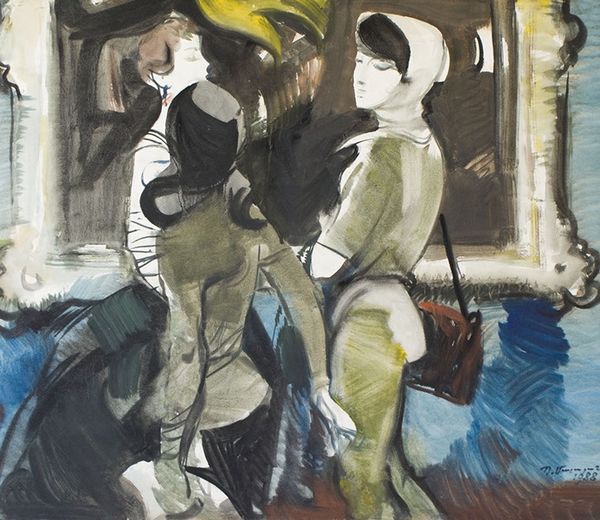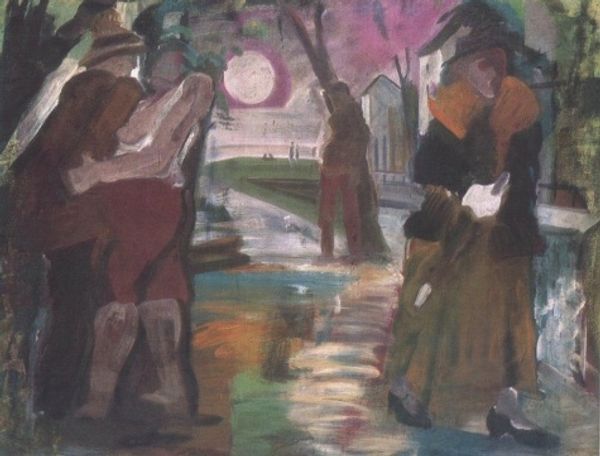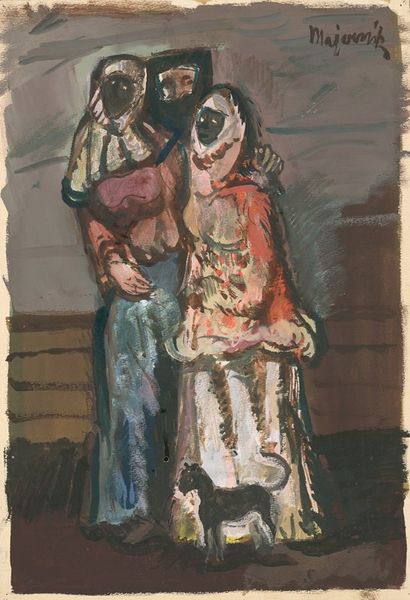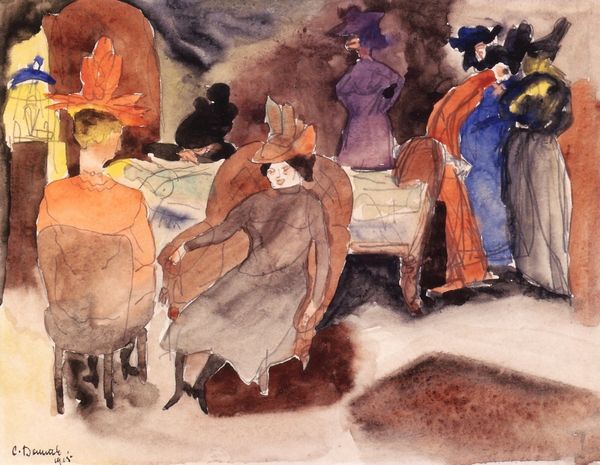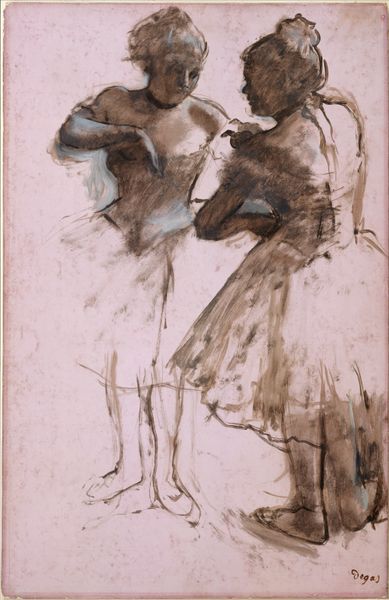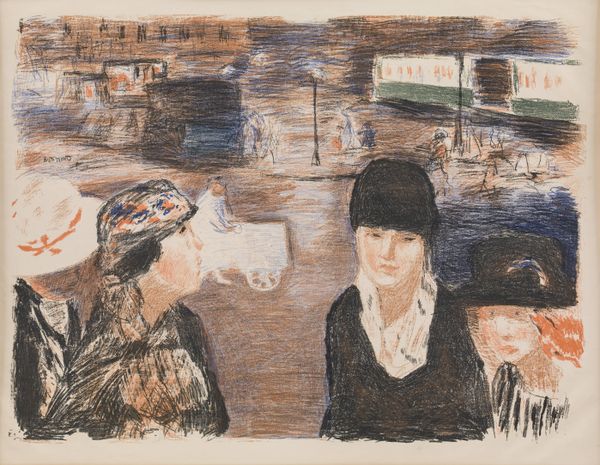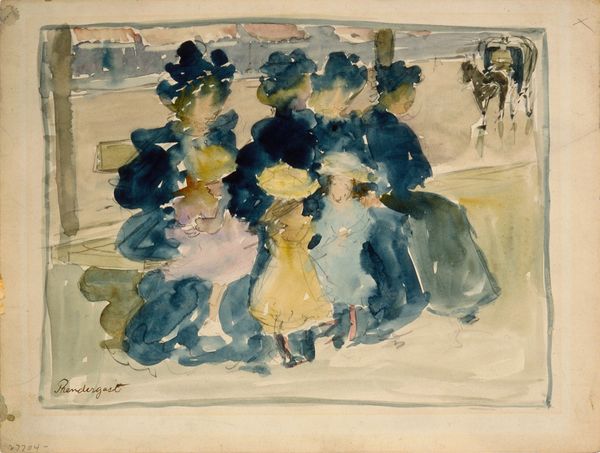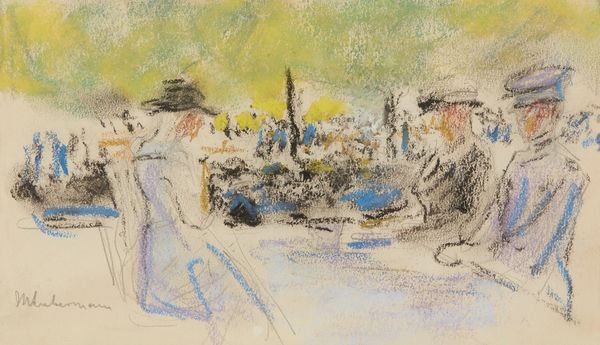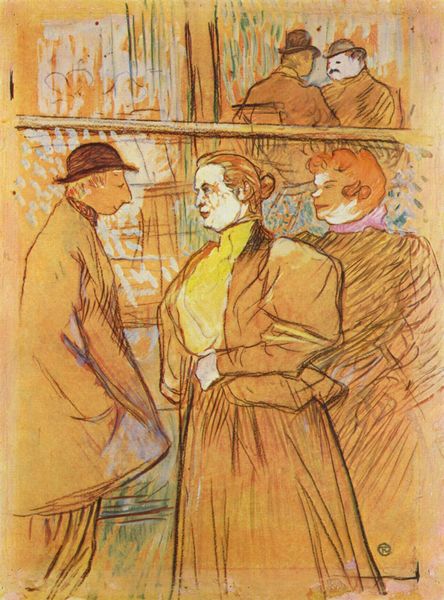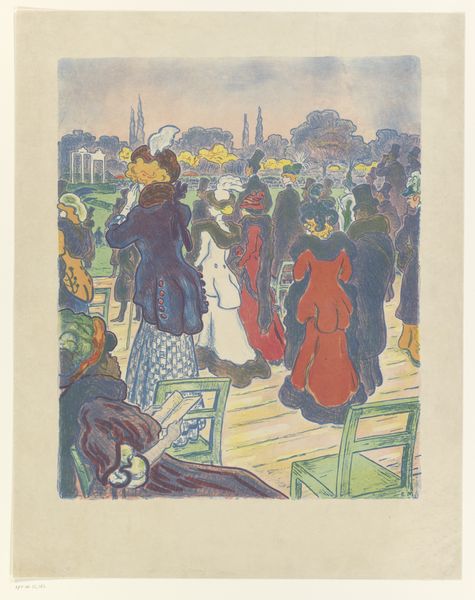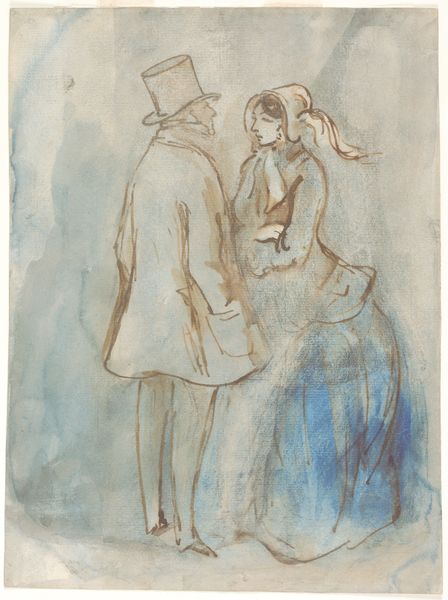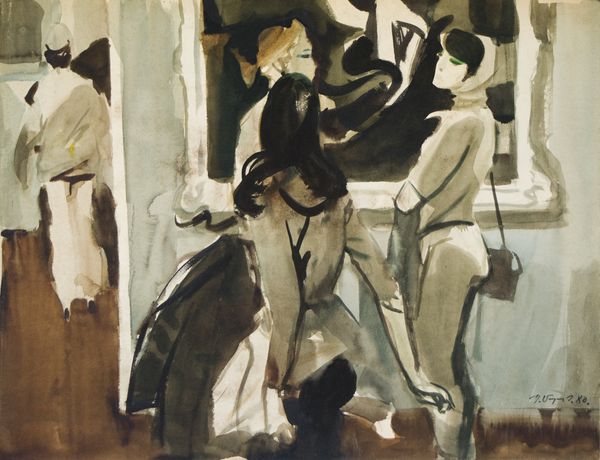
Dimensions: 158 mm (height) x 200 mm (width) (bladmaal)
Editor: We’re looking at Peter Hansen’s "Fra Enghavevej. Aften", which translates to "From Enghavevej. Evening," created sometime between 1905 and 1910 using watercolor. It's got a really interesting subdued, almost melancholy feeling. What do you see in this piece, particularly within its historical context? Curator: Well, what strikes me immediately is the capture of everyday life through the lens of early 20th-century social dynamics. Hansen presents a slice of Copenhagen street life, doesn't he? The figures, rendered in gentle watercolor, appear caught in a transient moment. It makes me wonder about the social conditions, and the classes represented, wouldn’t you say? Do you get a sense of the changing urban landscape? Editor: Absolutely, you see that burgeoning public transportation in the background! The class dynamics feel interesting. The couple in the foreground is better dressed compared to others milling about by the tram. So how do we read this intersection of urban life and class distinction? Curator: Precisely! Hansen uses impressionistic techniques - a fleeting moment, a quick sketch – but there is an embedded commentary on urban inequality and societal evolution, isn't there? It invites us to consider the role of public spaces. Who has access, who feels at ease, and what does it reveal about their place in society? Are we passive observers or active participants within a society rife with socio-economic disparities? Editor: So, the beauty isn't just in the technique but in the subtle commentary on early 20th-century Copenhagen society. That makes the piece feel so much more relevant to today. Curator: Exactly! Art becomes a mirror, reflecting the past and sparking dialogues in the present.
Comments
No comments
Be the first to comment and join the conversation on the ultimate creative platform.
